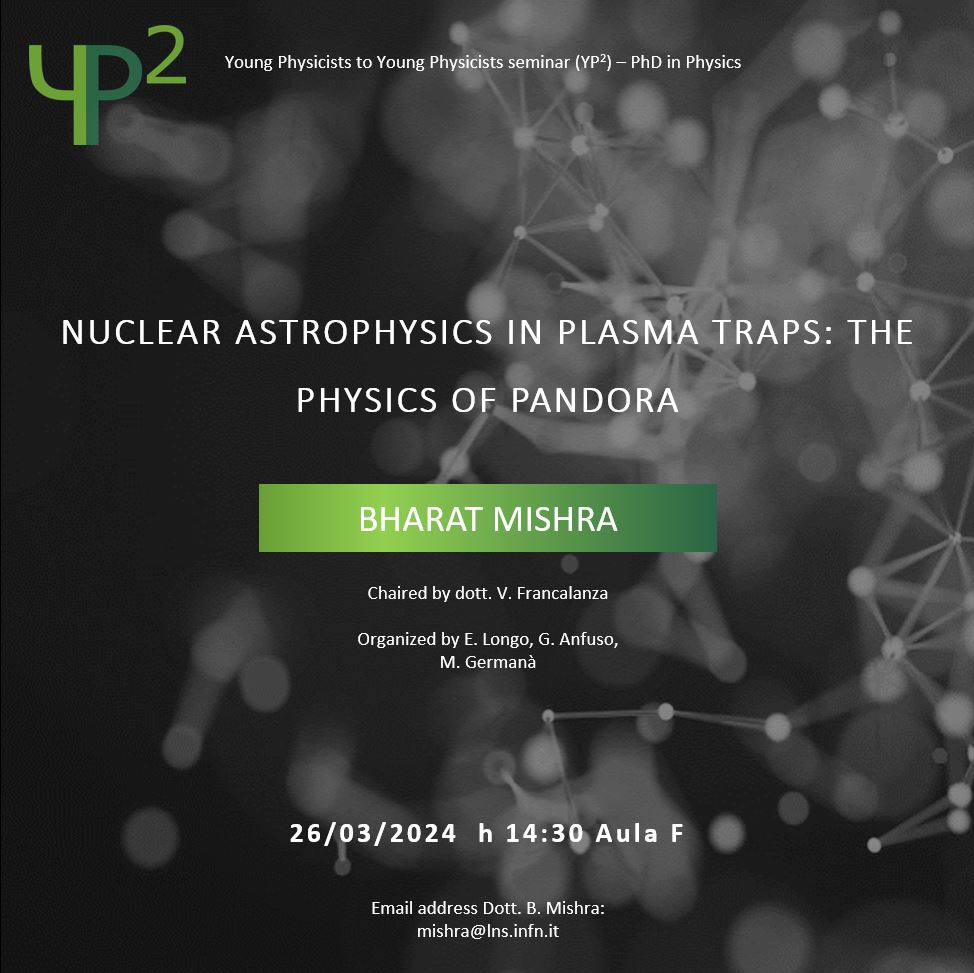Nuclear astrophysics in plasma traps: the physics of PANDORA

Martedì 26 marzo 2024, con inizio alle ore 14:30, presso l'Aula F del DFA, il Dott. Bharat Mishra terrà un seminario dal titolo Nuclear astrophysics in plasma traps: the physics of PANDORA.
Il seminario appartiene al ciclo Young Physicists to Young Physicists (YP2), organizzato dai Rappresentanti del Dottorato in Fisica.
Tutte le persone interessate sono invitate a partecipare.
Abstract. Electron cyclotron resonance ion sources (ECRIS) are versatile devices for supplying accelerators with highly charged ion beams. They are based on the dual concepts of magnetic confinement using a minimum-B profile and resonance heating through coupling with microwaves. The resultant plasmas are composed of energetic electrons and cold ions in various ionization stages and excitation levels, generated through collisional ionization and radiative processes. Traditionally, ECR plasmas have been simply used as ion sources but their compactness, stability and high energy density are a doorway to study in-plasma nuclear astrophysics as well. This is the objective of the upcoming PANDORA facility at INFN-LNS which aims to use them as a laboratory testbench to study phenomena of interest in astrophysics – in particular, the modification of β-decay rates in stellar plasmas, and heavy element opacity in early stage kilonovae. While ECR magnetoplasmas are excellent emulators of the stellar interior, there are certain challenges which must be overcome before results from experiments performed in the laboratory can be applied to nuclear astrophysics models. This talk will present the concept behind PANDORA and discuss its utility in nuclear astrophysics, with focus on s- and r-process nucleosynthesis models. In view of the same, the talk will also shed light on the basics of plasma-induced decay rate modification and measurement of opacity using plasma spectroscopy. It will be shown that while ECR plasmas are complex in nature, their utility can be exploited to the fullest by employing a wide range of diagnostics and simulation tools. The talk will conclude with some perspectives on the status of the facility and ongoing activities in the emerging field of in-plasma nuclear astrophysics.